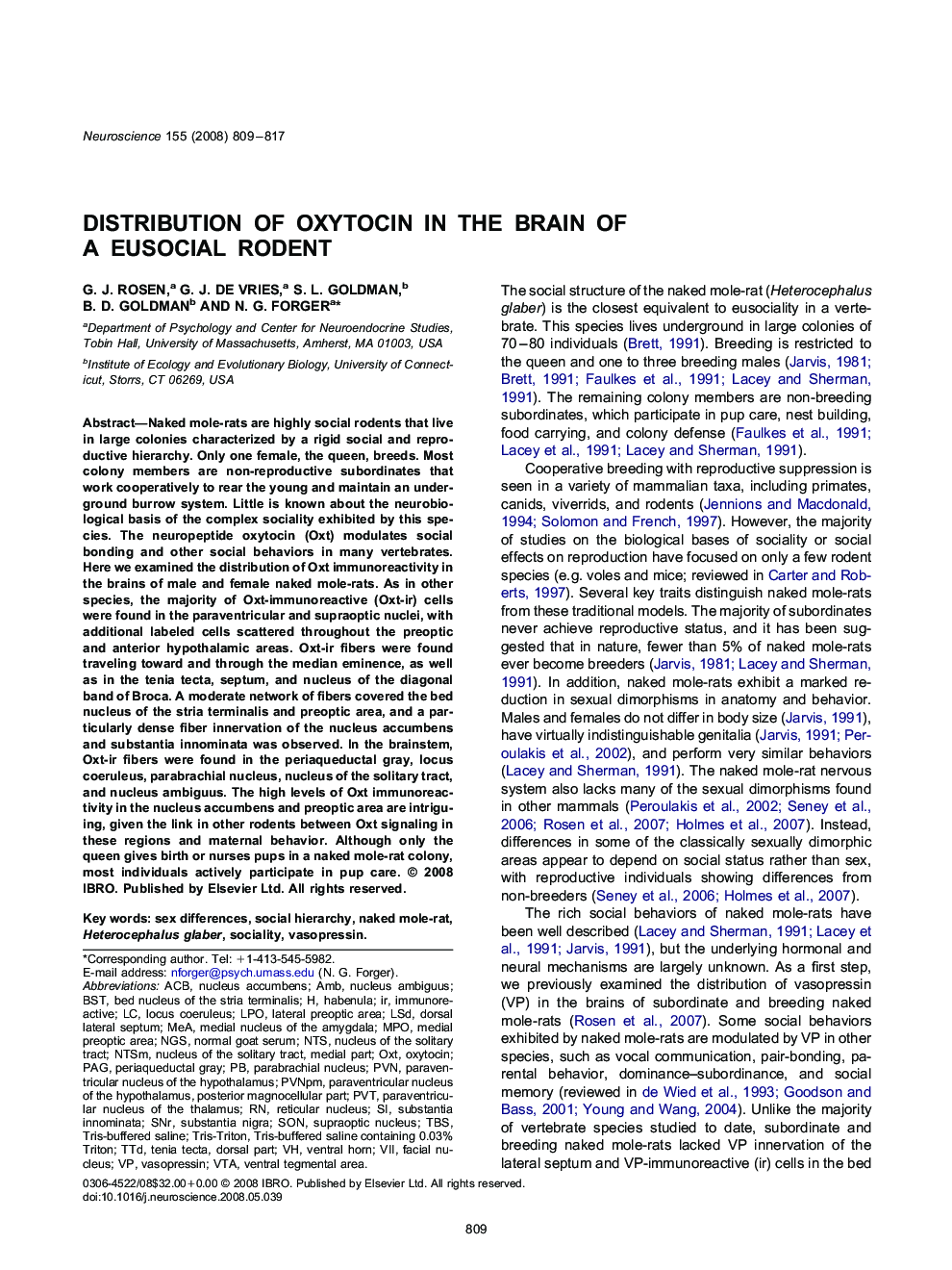| Article ID | Journal | Published Year | Pages | File Type |
|---|---|---|---|---|
| 4340732 | Neuroscience | 2008 | 9 Pages |
Naked mole-rats are highly social rodents that live in large colonies characterized by a rigid social and reproductive hierarchy. Only one female, the queen, breeds. Most colony members are non-reproductive subordinates that work cooperatively to rear the young and maintain an underground burrow system. Little is known about the neurobiological basis of the complex sociality exhibited by this species. The neuropeptide oxytocin (Oxt) modulates social bonding and other social behaviors in many vertebrates. Here we examined the distribution of Oxt immunoreactivity in the brains of male and female naked mole-rats. As in other species, the majority of Oxt-immunoreactive (Oxt-ir) cells were found in the paraventricular and supraoptic nuclei, with additional labeled cells scattered throughout the preoptic and anterior hypothalamic areas. Oxt-ir fibers were found traveling toward and through the median eminence, as well as in the tenia tecta, septum, and nucleus of the diagonal band of Broca. A moderate network of fibers covered the bed nucleus of the stria terminalis and preoptic area, and a particularly dense fiber innervation of the nucleus accumbens and substantia innominata was observed. In the brainstem, Oxt-ir fibers were found in the periaqueductal gray, locus coeruleus, parabrachial nucleus, nucleus of the solitary tract, and nucleus ambiguus. The high levels of Oxt immunoreactivity in the nucleus accumbens and preoptic area are intriguing, given the link in other rodents between Oxt signaling in these regions and maternal behavior. Although only the queen gives birth or nurses pups in a naked mole-rat colony, most individuals actively participate in pup care.
